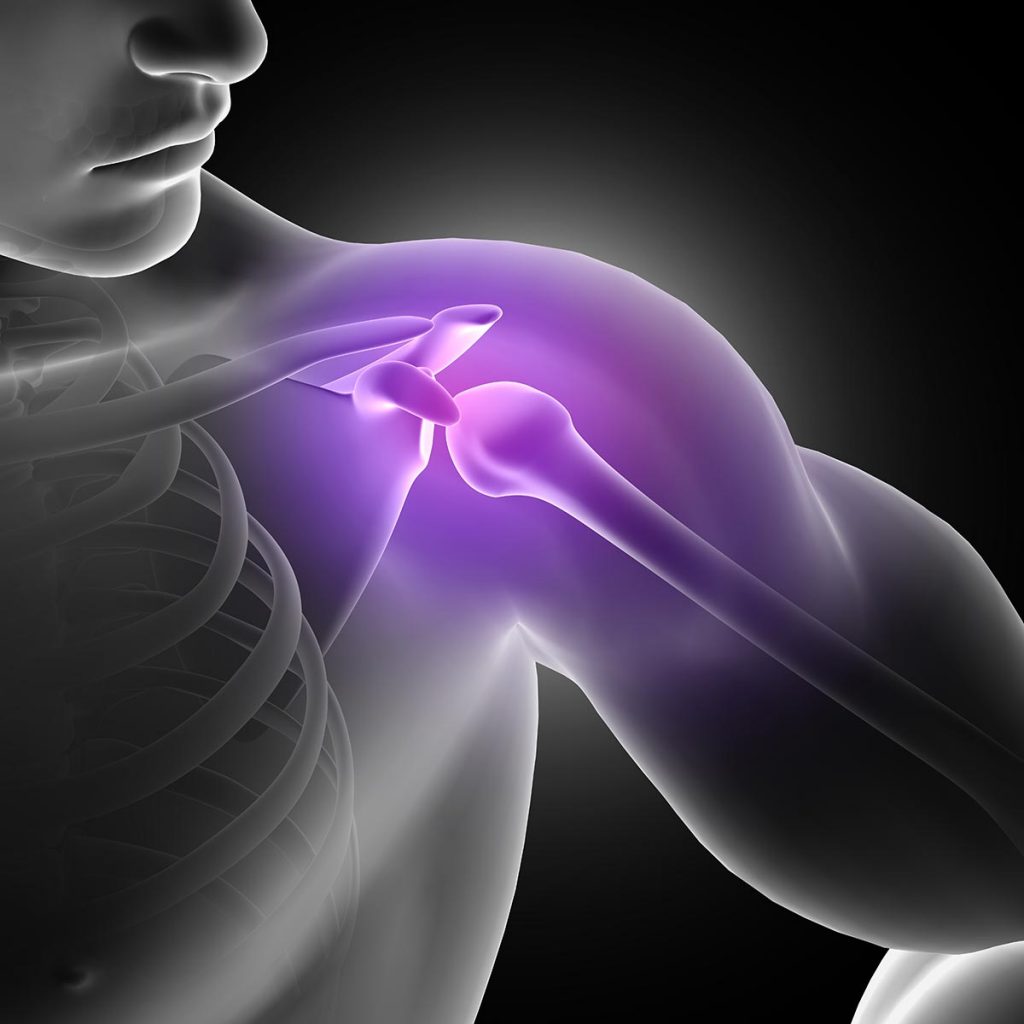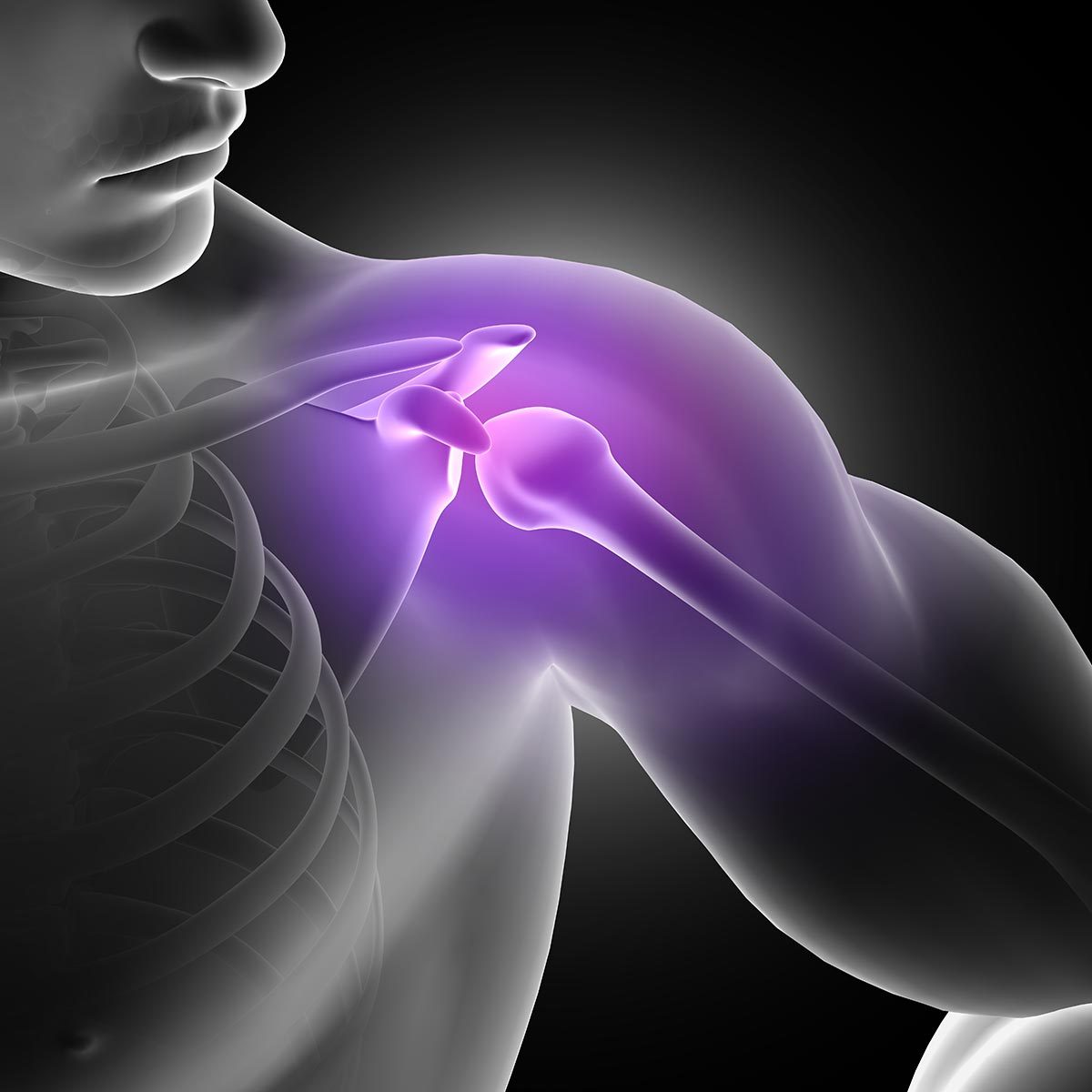Rotator Cuff Injury
![]()
Call (703) 520-1031 or use the form to send us your contacts.
The construction of the shoulder joint includes a delicate and complex balance of muscles and tendons. The shoulder is used in a variety of activities, and it is the rotator cuff that contributes to the range of motion. The tissues making up the rotator cuff are vulnerable to a variety of conditions like tendinitis and bursitis, but they are also subject to painful injuries like tendon tears. Any injury to the rotator cuff can interfere with life activities, but fortunately there are a number of treatment options available to restore shoulder functioning.

What is a Rotator Cuff?
The rotator cuff consists of tendons and muscles that enable a person to rotate the arm and to raise the arm over the head. It is called a “cuff” because the muscles and tendons form a cuff over the ball of the upper arm bone in the shoulder socket. Each muscle in the rotator cuff enables certain movements.
- Infraspinatus – primary muscle enabling the rotation and extension of the shoulder.
- Supraspinatus – muscle that works to keep the upper arm stable and assists with lifting the arm; it also holds the humerus (long bone in the upper arm) in place.
- Subscapularis – muscle enabling several movements that include arm rotation, the ability to hold the arm straight out and the ability to lower the arm; it also holds the upper arm bone to the shoulder blade.
- Teres Minor – smallest rotator cuff muscle that assists with the ability to rotate the arm while the arm is stretched out from the body.
There are three more muscles in the shoulder that are not part of the rotator cuff. Tendons attach the muscles to bones. Working together, the muscles and tendons stabilize and strengthen the shoulder during the various movements.
Medical Problems Involving the Rotator Cuff
The rotator cuff is subject to a variety of problems that include the following:
- Rotator impingement syndrome – rotator cuff tendons are trapped and compressed while moving the shoulder.
- Rotator cuff tendonitis – tendons get irritated or inflamed.
- Shoulder bursitis – inflammation of the small, fluid-filled sacs called bursae.
- Calcific tendonitis – calcium deposits form bone spurs on the underside of the acromion bone, and arm movement causes the spurs to rub the tendon.
- Tear – a rotator cuff tear is a tear in the tendons.
Common Causes of Rotator Cuff Injuries
Rotator cuff injuries are caused as a result of a single traumatic incident or through slow degeneration. Common causes include:
- Rotator cuff impingement inflames bursae or tendons,
- Wear and tear from repetitive movements create repeated tendon microtrauma,
- Tendon weakens due to aging, leading to tears,
- Fall on an outstretched arm and hand,
- Lifting heavy objects,
- Other shoulder injury, like a broken collar bone, causes tissue tear,
- Infection inflames the bursa or tendons.

People tend to experience injuries due to repetitive movements when they have a job requiring the same shoulder movement, like painting, or are involved in sports. The arm is repeatedly lifted overhead, causing wear and tear on the tendons.
There are two types of tears:
- Partial tear or incomplete tear – the tendon is frayed but not completely torn
- Complete tear – the tendon is torn all the way through or is pulled off the bone
Symptoms of an Injury to the Rotator Cuff
A rotator cuff injury is not always painful, especially if an injury is forming by slow degeneration. However, people can experience a range of rotator cuff pain from mild to severe. Common rotator cuff tear symptoms include the following:
- Pain when moving the arm – can be specific movements or when lifting and lowering the arm;
- Pain when lying on the shoulder, like when sleeping;
- Difficulty lifting and lowering the arm; often accompanied by pain;
- Inability to lift the elbow;
- Shoulder weakness;
- Inability to lift objects that were normally lifted in the past;
- Crepitus, an abnormal crackling or popping sound, when the shoulder or arm is moved; often accompanied by a crunching sensation that may be painful.
The reduction in shoulder function varies, depending on the size or depth of the tear. When there is a small tear, the arm can still be lifted, and it may or may not be accompanied by pain. A moderate tear makes it difficult to lift or move the arm, and movement is painful. A large tear in the rotator cuff is likely to make it impossible to lift the arm, and it is extremely painful. When there is shoulder pain rotator cuff injury is immediately suspected.
Methods for Diagnosing Injuries to the Rotator Cuff
Many life activities are curtailed when the shoulder is not functioning properly and is painful to move. It may lead to giving up the playing of sports, difficulty performing job duties and problems sleeping. Some people stop moving their arm or shoulder to ease pain, and the shoulder joint freezes up or develops arthritis, creating another medical problem. Frozen shoulder is when the rotator cuff tissue thickens and grows tight.
It is important to see a physician to determine the precise problem. Continuing to use the shoulder when there is a tear can lead to the tear getting worse or may lead to permanent loss of range of motion or weakness. It is chronic pain that often drives people to see a medical professional.
The physician will discuss the history of the injury and do a medical examination of the shoulder. The medical examination will include a rotator cuff injury test consisting of different motions to explore the current range of shoulder movement and muscle strength. For example, the patient will be asked to place a hand on the small of the back with the palm facing outward and then try to lift the hand away from the back. The physician will also rule out other medical issues that may be causing pain, like a pinched nerve.
Since this is a soft tissue injury, x-rays are of little value except to detect bone spurs or a problem with the position of the arm bone, like the humeral head is intruding into the rotator cuff space or a bone deformity. X-rays will not show a tendon tear. The two diagnostic tests most often used to pinpoint the rotator cuff pain location and tissue damage are:
- Magnetic Resonance Imaging (MRI) – radio waves produce images of all the shoulder structures.
- Ultrasound – sound waves produce images of shoulder structures, allowing dynamic testing as the shoulder is moved.
Treatment Options
Any rotator cuff treatment the physician recommends is focused on reducing pain and restoring shoulder and arm functioning. Nonsurgical treatments are almost always tried first, making surgery a last resort. The best treatment depends on the type and extent of the injury.
- Rest the shoulder to allow for healing but not long enough to develop frozen shoulder; may wear a sling.
- Take over-the-counter nonsteroidal anti-inflammatory medications.
- Apply ice first for a few days to reduce inflammation and pain, followed by applying heat to relax sore and tight muscles.
- Follow recommended treatments for bursitis or tendinitis, i.e. resting the joint, physical therapy, anti-inflammatory medications, etc.
- Application of electrical stimulation of nerves and muscles.
- Steroid injection for temporary relief (limited use because overuse can weaken tendons).
- Exercise routine, including stretches, intended to restore range of movement, flexibility and shoulder strength.
- Physiotherapy – combination of treatments that include heat treatment, exercise and physical therapy, rather than drugs or surgery, to strengthen the muscles and improve flexibility.
- Surgery.
Rotator cuff surgery is frequently used when the tendon is not attached to the bone; there is a large tear; or pain does not improve after trying nonsurgical treatments. There are different types of surgeries to repair rotator cuff injuries.
- Arthroscopic tendon repair – a tiny camera is inserted through a small incision to reattach a torn tendon to the bone.
- Tendon transfer – a different tendon than the severely damaged one is attached as a replacement.
- Open tendon repair – a large incision is made so the surgeon can reattach the damaged tendon to the bone.
- Shoulder replacement – a surgery of last resort, an artificial joint is installed; in reverse shoulder arthroplasty, the artificial joint’s ball is attached to the shoulder blade and the socket part is attached to the arm bone.
Early Treatment Recommended
The sooner treatment is started when problems appear in the shoulder, the more likely surgery can be avoided. Small tears are less likely to become large tears, additional damage to the rotator cuff is prevented and pain is reduced or eliminated sooner rather than later. Effective treatments enable patients to resume their work and recreational activities.
